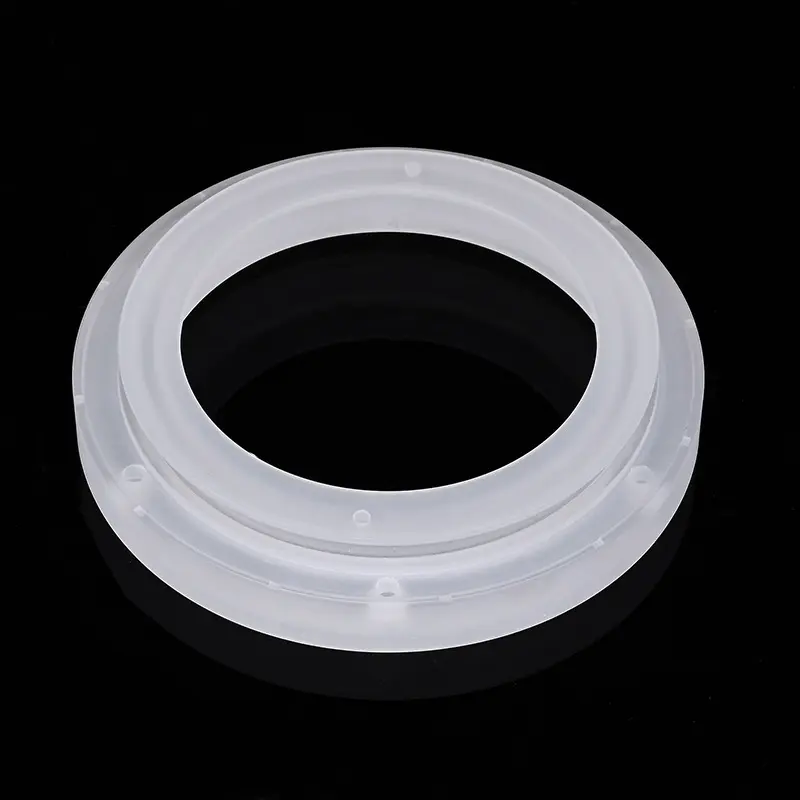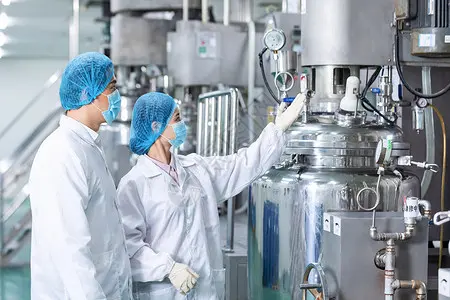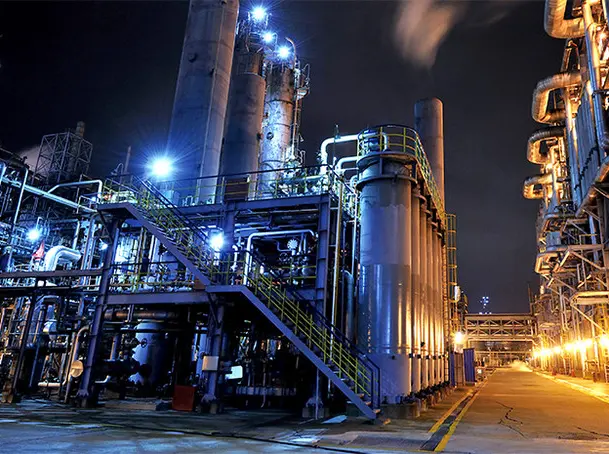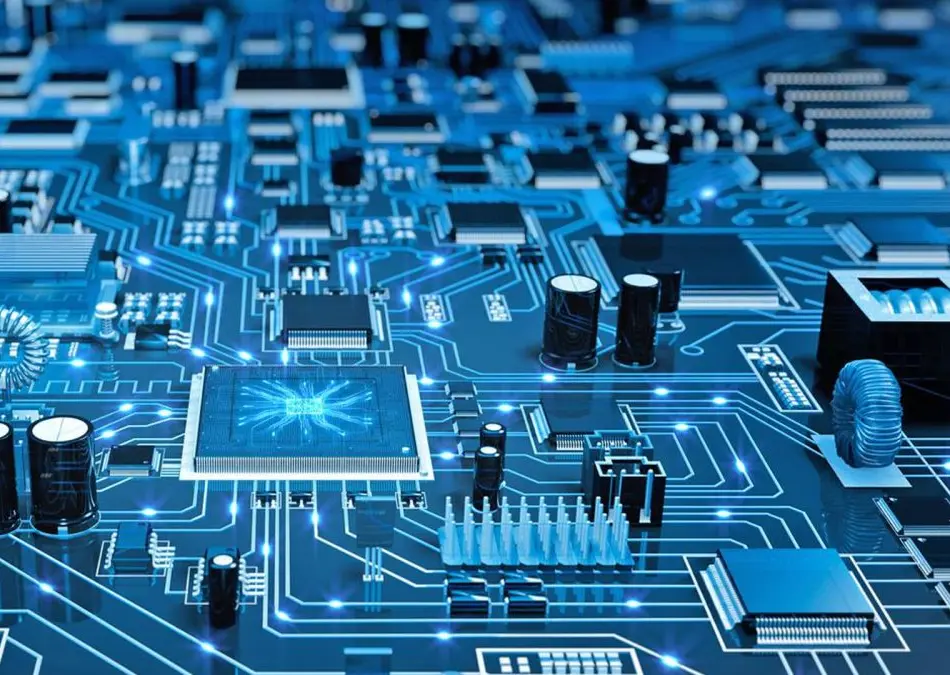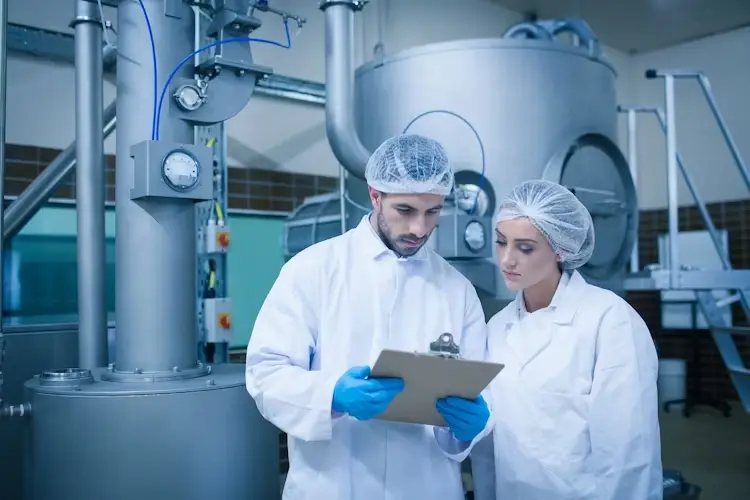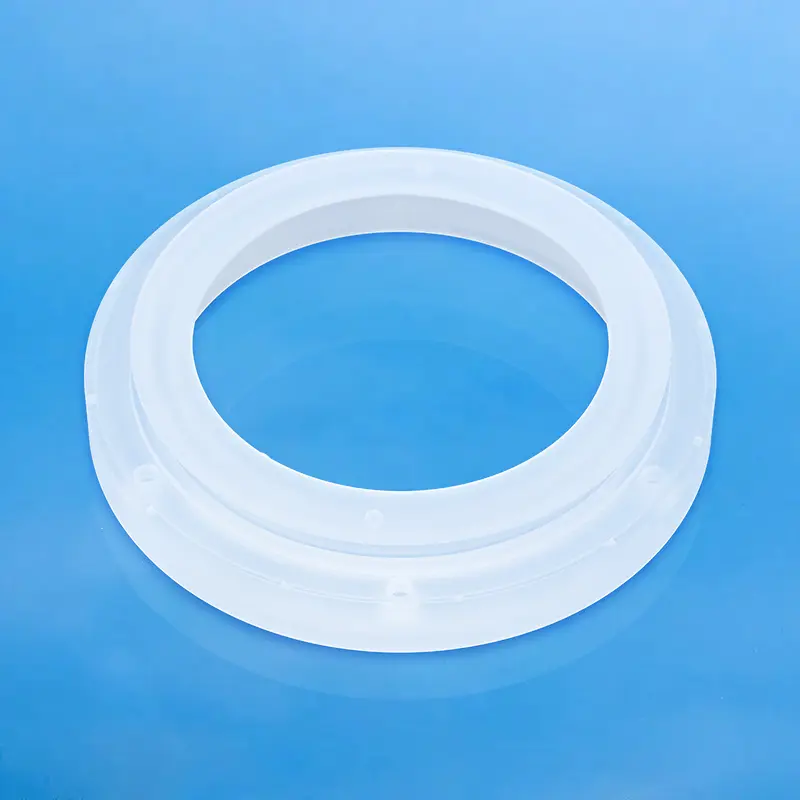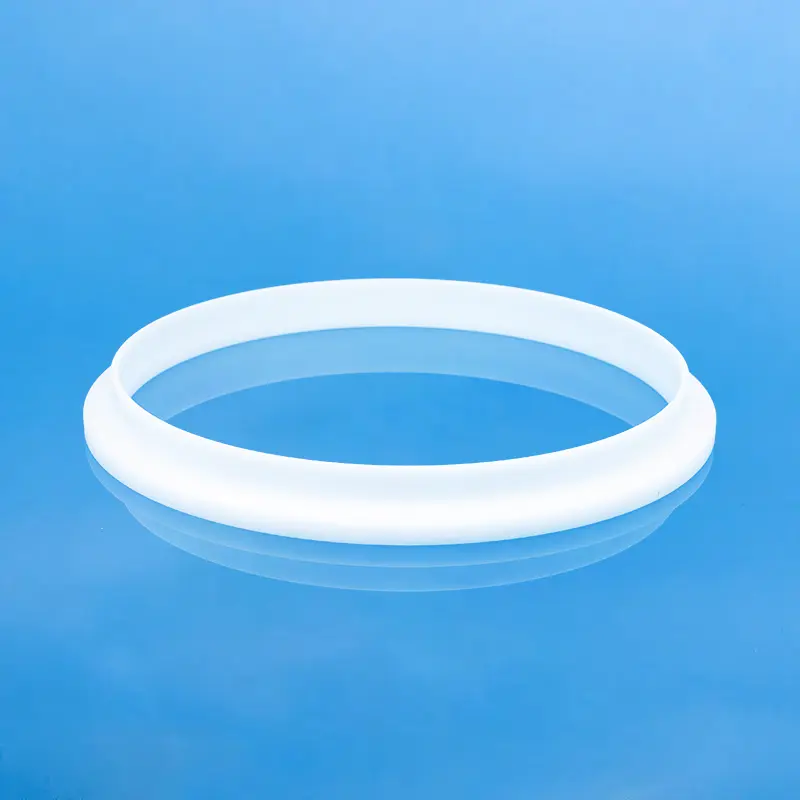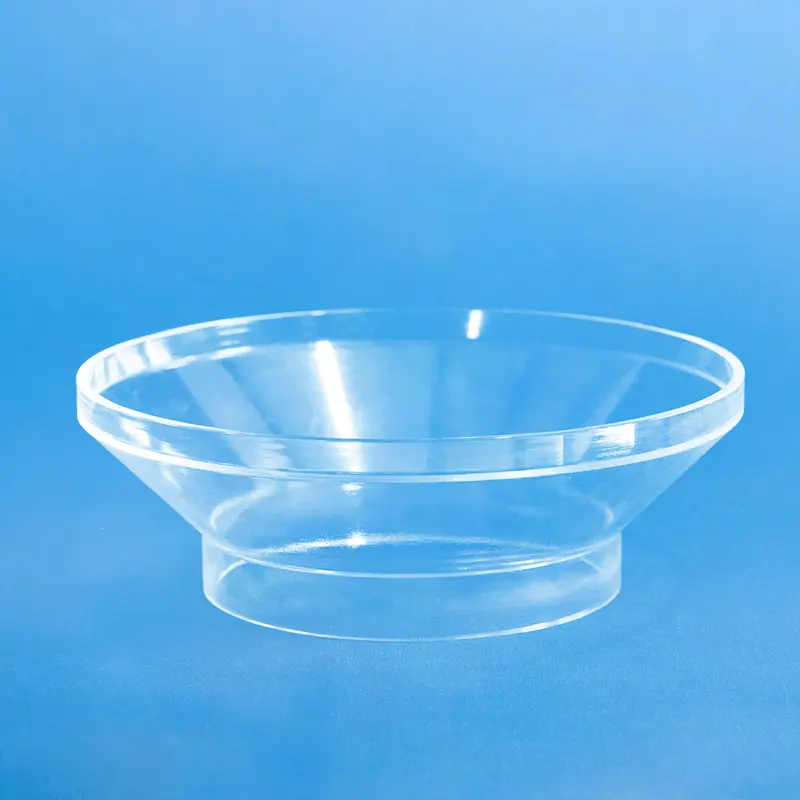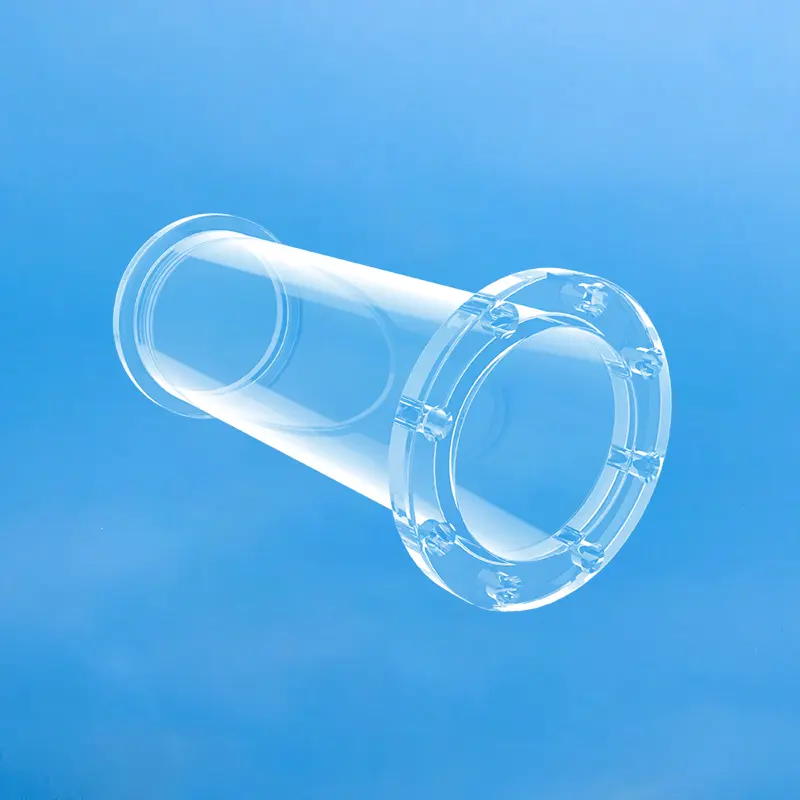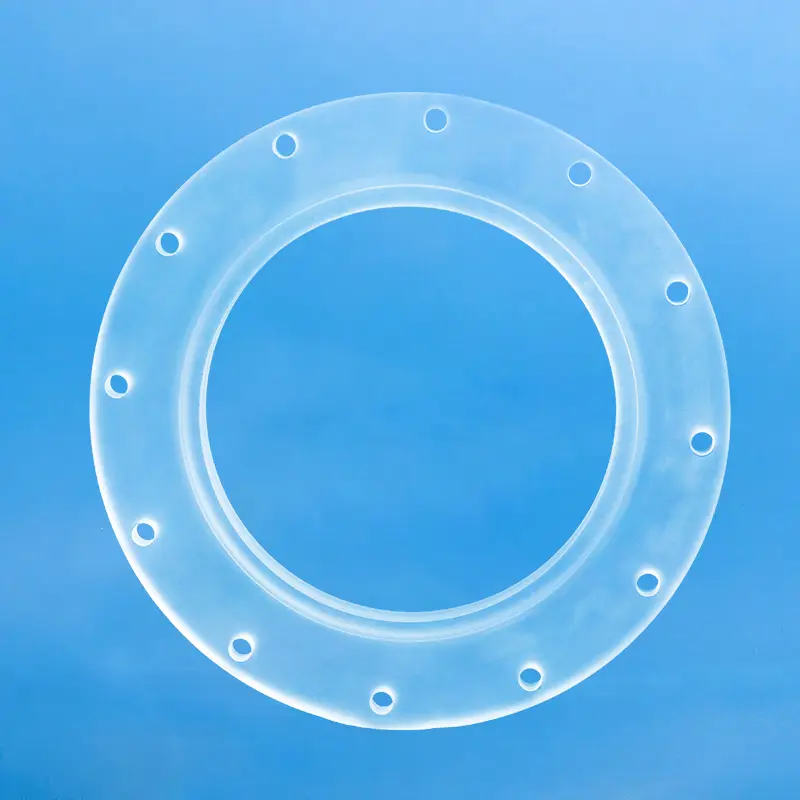Quartz flanges are high-performance pipe connection components made from high-purity quartz glass, characterized by their excellent corrosion resistance and high-temperature performance. They are widely used in industries such as chemical processing, pharmaceuticals, and bioengineering due to their ability to withstand extreme temperatures and chemical media, ensuring the stable operation and long-term reliability of piping systems.
| 속성 콘텐츠 | 속성 값 |
|---|---|
| SiO2 | 99.99% |
| 밀도 | 2.2×10³ kg/cm³ |
| 경도 | 5.5 - 6.5 모스 스케일 570 KHN 100 |
| 인장 강도 | 4.8×10⁷ Pa(N/mm2)(7000psi) |
| 압축 강도 | >1.1×10⁹ Pa(160,000psi) 이상 |
| 열팽창 계수 | 5.5×10-⁷ cm/cm-°C(20°C-320°C) |
| 열 전도성 | 1.4W/m-°C |
| 비열 | 670 J/kg-°C |
| 연화 포인트 | 1730°C(3146°F) |
| 어닐링 포인트 | 1210°C(2210°F) |
| 스트레인 포인트 | 1120°C(2048°F) |
| 작업 온도 | 1200°C(2192°F) |
| 전기 저항 | 7×10⁷ 옴 cm(350°C) |
| 크기 | 사용자 지정 |
| 로고 | 맞춤형 로고 수락 |
High-Temperature Performance
Quartz flanges can withstand extremely high temperatures, typically above 1000°C, making them suitable for high-temperature environments, such as high-temperature steam pipes and molten metal transport systems.
Excellent Chemical Stability
Quartz flanges exhibit exceptional resistance to various chemical substances, including strong acids, strong bases, and organic solvents, which makes them highly favored in the chemical and pharmaceutical industries.
High-Purity Material
Quartz flanges are manufactured from high-purity quartz glass, allowing their use in cleanroom environments within the semiconductor and microelectronics industries as they do not release particles or chemicals that could contaminate products.
Good Mechanical Strength and Durability
Quartz flanges possess good mechanical strength and durability, maintaining their structural integrity even under repeated temperature and pressure fluctuations, thereby extending the lifespan of equipment.
애플리케이션 시나리오
Petrochemical Industry
Within the petrochemical industry, quartz flanges serve as important pipe connection components. They meet the requirements for harsh environments characterized by high temperatures, high pressure, and strong acids/bases. Their unique impact resistance makes them particularly useful for connecting pumps and valves.
Electronics and Electrical Industry
Quartz flanges are widely applied in the electronics and electrical industries, such as for connecting precision pipes in LED chip production, and oxide synthesis reactions in solar cell manufacturing. Their high purity and corrosion resistance ensure the precision connections and the purity and continuity of reaction processes.
The primary material of quartz flanges is high-purity quartz glass, which exhibits exceptional corrosion resistance and high-temperature performance. It can effectively resist the erosion of various chemical substances, including strong acids, strong bases, and organic solvents, while maintaining stability in high-temperature environments (typically exceeding 1000°C), without deforming or melting.
Quartz flanges are widely used in industries such as chemical processing, petrochemicals, electronics and electrical, and food manufacturing. In the chemical and petrochemical industries, they are used for pipe connections involving high-temperature and corrosive media. In the electronics and electrical industries, they are used for precise pipe connections in LED chip production and solar cell manufacturing. In the food manufacturing sector, they are used for transporting slightly corrosive materials, ensuring food safety.
The maintenance and replacement cycles of quartz flanges depend on multiple factors, including the operating environment, temperature, pressure, and the type of chemical media involved. Generally, if quartz flanges are properly used and regularly maintained, their service life can be quite long. However, with increased use, they may gradually lose performance due to wear, contamination, or the formation of micro-cracks. It becomes necessary to replace them when such issues occur. The specific maintenance and replacement cycles should be determined based on actual usage conditions and the manufacturer’s recommendations.
자주 묻는 질문
석영 유리는 우수한 물리적 및 화학적 특성, 매우 높은 기계적 경도, 우수한 전기 절연성, 고온 및 내식성, 낮고 안정적인 지연 성능, 우수한 빛 투과율 등을 갖춘 단단하고 부서지기 쉬운 소재입니다. 반도체, 광학, 전기, 화학, 항공우주, 자동차 및 기타 분야에서 널리 사용됩니다. 단단하고 부서지기 쉬운 재료는 가공이 어렵고 많은 분야에서 가장자리 붕괴가 적고 재료 손실이 적으며 단면 거칠기가 낮고 절단 두께 범위가 넓은 절단 공정이 절실히 필요합니다. 석영 유리의 전통적인 절단 방법은 기계식 절단, 즉 휠 절단입니다. 비 전통적인 절단 방법에는 워터젯 절단, 전기 화학 방전 와이어 절단, 연속 레이저 절단 등이 포함됩니다. 기계식 절단은 비용이 저렴하지만 휠과 재료 사이의 접촉으로 인해 공구 마모가 크고 재료가 공구에 의해 쉽게 오염됩니다. 석영 유리는 가장자리 붕괴, 미세 균열 및 잔류 응력이 발생하기 쉬우므로 재료의 강도와 성능에 영향을 미칩니다! 곡선 절단이 어렵고 연마 및 연마와 같은 후처리가 필요합니다. 레이저 절단은 재료에 직접 접촉하지 않고 접촉 응력이 없으며 복잡한 곡선 절단을 수행할 수 있습니다. 피코초 레이저는 작은 스폿 직경, 고정밀, 재료와의 짧은 작용 시간, 작은 작용 면적의 장점을 가지고 있으며 단단하고 부서지기 쉬운 재료의 가공에 적합합니다.
。

